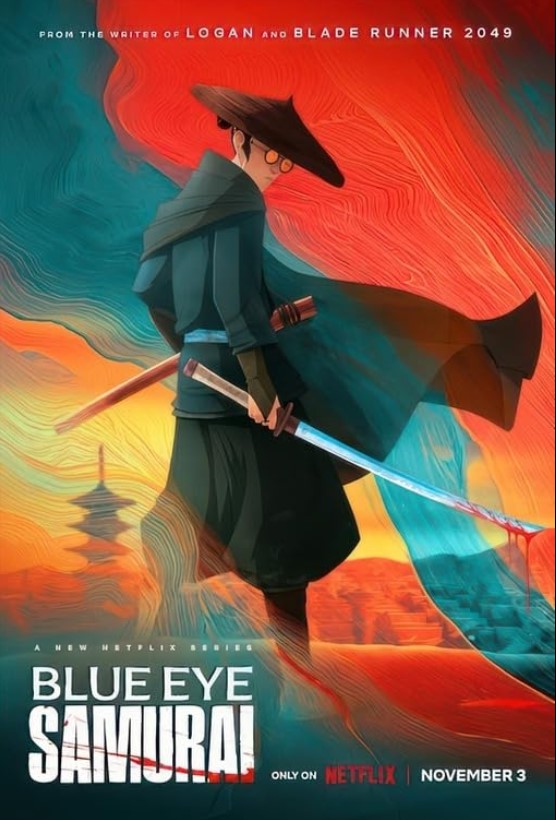Elegant, powerful, and striking, I think Blue Eye Samurai is one of the best original programs Netflix has ever produced.
Set in 17th-century Japan, Mizu is on a mission of revenge. She is mixed race in a time and culture where that is beyond taboo. With the incredible vitriol pointed at her and her Japanese mother, Mizu had to stay hidden to protect her life. Growing up repressed and fearful, Mizu’s anger turned uncontrollable after witnessing her mother’s murder. As a child, she hid in isolation with a blind swordmaster. With him, she learned not only to forge metal into brilliant weapons but also her body. She has narrowed down who her possible father could be by figuring out how many white men were in Japan around the time of her birth. The list is short at four. She sets out on a mission of information gathering and bloodletting.
I didn’t know about Blue Eye until it was released so it was a complete surprise for me. There are three writers given credit for these amazing 8 episodes. Yana Billie has one episode credit and Co-Creators Michael Green (7 episodes) and Amber Noizumi (8 episodes) co-wrote the rest. Michael and Amber are married and the genesis of the show came from Amber’s mixed heritage. Of further note, Michael co-wrote both Logan and Blade Runner 2049, which are both fantastic films.
This show has been crafted with the utmost care from every angle. The writing is fantastic. This story is for mature audiences as it delves deep into issues of abuse, anger, relationships, justice, xenophobia, oppressive patriarchal societies, and classism.
Mizu does not have an easy time at all. She takes violence nearly as much as she dishes it out. It’s a visceral experience watching her claw through troops on her way to the top of the mountain only to have to repeat the process. But the fire that propels her on her mission of revenge is pure anger and that wracks her mind as much as the physical fighting does. This anger only goes so far and she has to reassess her motives and approach to what she’s doing. When more than one ally calls you a monster–you’re running too close to the cliff edge.
While Mizu is the main character, the people she meets on her journey are just as fleshed out as she is. I wasn’t expecting a lot from the B story of Princess Akemi, but her tale is just as engaging as Mizu’s. Akemi’s upbringing is completely different from Mizu’s, but their conflicts are similar. As they are from distinct walks of life, they navigate their obstacles much differently. This dichotomy offers interesting perspectives of this time for women in Japan. Plus, Mizu and Akemi have terrific support characters by their side that add greater depth to the story. In what is probably the best compliment I can give, I never felt let down when leaving one character to explore what the other was doing. The way the characters intersect is also well done, and at 8 episodes of around 50 minutes each, the pacing is impeccable.
The production is top-notch in every regard. The animation and art style are stunning. The soundtrack is breathtaking and the voice cast is perfect. Some of the best action in animation can be found on this show. It’s grounded in realism but still has an air of fantasy about it. The sense of impact is unmatched and the variety of fighting styles and battle scenarios keep the action from getting redundant or stale. Each action sequence is an experience that pushes the story forward, there’s a point to all of it.
I’m writing about Blue Eye Samurai to try and get more eyes on this production. This is the kind of storytelling I want more of. It doesn’t matter that it’s animated, that aspect just makes it stand out more. Watch it and when you’re done, continue to spread the good word.
